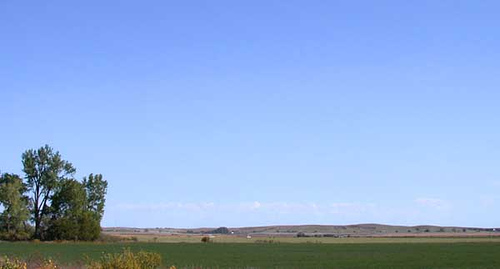
Newfoundland naturalist Moses Harvey collected the first complete specimen of a giant squid in December 1873.
He kept it in his bathtub.

Newfoundland naturalist Moses Harvey collected the first complete specimen of a giant squid in December 1873.
He kept it in his bathtub.
A curious circumstance occurred at the Bush Tavern, Bristol, on Monday night, May the 4th, about eleven o’clock. A young man, who has since been discovered to be a sailor, belonging to the Union ship of war, lying at Plymouth, went to bed apparently composed; but before the servant had left the room five minutes, the house was alarmed by his cries of ‘Help me out,’ and by the breaking of glass, occasioned by his bursting through the sash. Though asleep, he continued walking from one roof to the other, and along the narrowest ridges, and at length jumped from the surprising height of thirty feet, without receiving any material injury. He was conveyed to bed, and left the inn the following morning on his journey for Plymouth.
— Oxford Herald, May 9, 1812

On June 18, 1178, five monks at Canterbury reported witnessing a catastrophe in the sky:
There was a bright new moon, and as usual in that phase its horns were tilted toward the east; and suddenly the upper horn split in two. From the midpoint of this division a flaming torch sprang up, spewing out, over a considerable distance, fire, hot coals, and sparks. Meanwhile the body of the moon which was below writhed, as it were, in anxiety, and, to put it in the words of those who reported it to me and saw it with their own eyes, the moon throbbed like a wounded snake. Afterwards it resumed its proper state. This phenomenon was repeated a dozen times or more, the flame assuming various twisting shapes at random and then returning to normal. Then after these transformations the moon from horn to horn, that is along its whole length, took on a blackish appearance.
Stony Brook earth scientist Jack Hartung speculates that this may have been an impact event that created the 20-kilometer crater Giordano Bruno.
In the year 1497 a giant ‘Jack-killer’ was captured in the vicinity of Mannheim, with the following announcement in Greek appended to his muzzle: — ‘I am the first fish that was put into this pond by the hands of the Emperor Frederic the Second, on this 3rd day of October, 1262.’ The age of the informant, therefore, if his lips spoke truth (and the unprecedented dimensions of the body left little doubt on that point), was more than two hundred and thirty-five years. Already he had been the survivor of many important changes in the political and social world around, and would have swam out of perhaps as many more had the captors been as solicitous to preserve his life as they were to take his portrait. This, on the demise of the original, was hung up in the castle of Lautern, and the enormous carcase (which, when entire, weighed three hundred and fifty pounds, and measured nineteen feet) was sent to the museum at Mannheim, where, deprived of its flesh, and caparisoned de novo, it hung, and haply yet hangs, a light desiccated skeleton, which a child might move.
— Edmund Fillingham King, Ten Thousand Wonderful Things, 1860
Around 6 p.m on Jan. 14, 1950, a second-year cadet at West Point named Richard Calvin Cox received a visit from a mysterious friend named George who had a German accent.
Shortly afterward, Cox left his dormitory and vanished. His disappearance is still unexplained; he’s the only cadet ever to go missing from West Point. After a fruitless investigation, he was declared legally dead in 1957.
As some workmen were cutting down an elm-tree belonging to Mr. Jopson, of Conisbrough, they discovered in the heart of the tree a horse-shoe with a nail in it, in excellent preservation; it is supposed, it must have been lying there for fifty years and upwards: the tree measures five feet in circumference. Mr. Green, of Sheffield, has the shoe now in his possession, where it may be seen by the curious.
— La Belle Assemblée, January 1810

Play your cards right in Nebraska and you could be named an admiral. The landlocked state proudly created its own navy in 1931, and it’s named about 100,000 honorary admirals since then:
And I [the Governor of Nebraska] do strictly charge and require all officers, seamen, tadpoles and goldfish under your command to be obedient to your orders as Admiral—and you are to observe and follow, from time to time, such directions you shall receive, according to the rules and discipline of the Great Navy of the State of Nebraska.
There’s no pay, but you’d be in rare company: Bill Murray, Douglas MacArthur, Jack Nicklaus, and Elizabeth II have all been inducted.
Pity Lal Bihari: In 1976 the Indian farmer applied for a bank loan and learned he was dead. His uncle had arranged it in order to get control of his land.
This is fairly common in the crowded northern state of Uttar Pradesh, and it creates an odd predicament: If you complain too much about being dead, your enemies might kill you for real.
The struggle led Bihari to make some strangely existential demonstrations. He added the word “dead” to his name, signed his letters as the “late” Lal Bihari, organized his own funeral, and demanded a widow’s compensation for his wife.
Finally he was recalled to life in 1994, after 18 years in the grave. But the “association of the dead” that he founded has now grown to 20,000 members.
One of the officers of Haslar Hospital being dangerously ill, a medical gentleman who was attending him, had occasion, about two o’clock on Saturday morning, the 25th of December, 1814, to send the nurse from the officer’s house to the dispensary; the weather being bad, the nurse wrapped herself round with a piece of red baize, with which she covered, in part, a candle and lantern, to prevent the light from being blown out, as the wind was very high. The rays of light issuing from the red covering, to the imagination of a sentry at a distance, she appeared a terrific spectre; and as she approached him his fear so increased, that he ran from his post with haste to the guard-house, where, in about half an hour, he expired!
— Courier, Dec. 28, 1814

The Teapot Dome scandal rocked the presidency of Warren G. Harding and sent his interior secretary to prison.
And what better way to commemorate it than with this oddly cheery building, which served as a full-service gas station in 1922?
Ask the government — it’s now on the National Register of Historic Places.